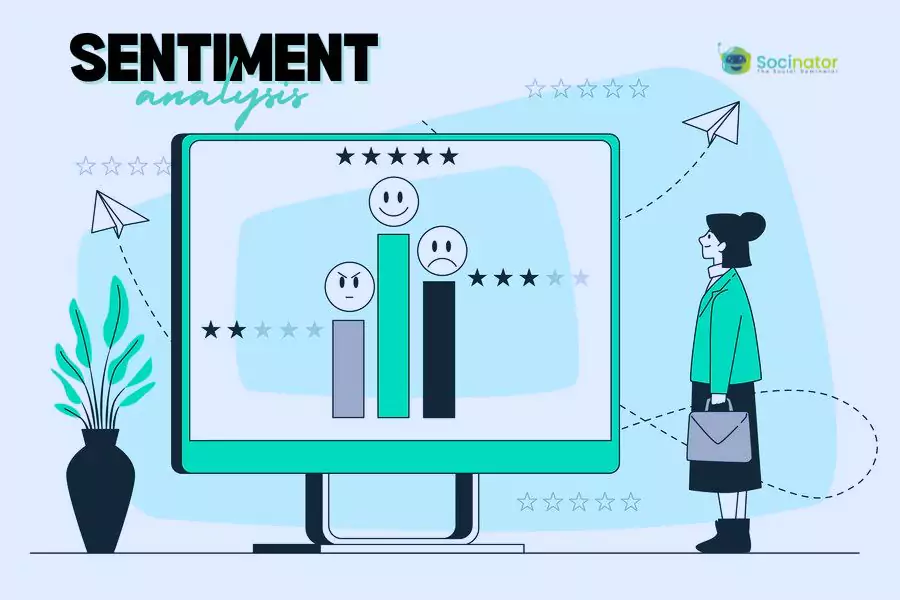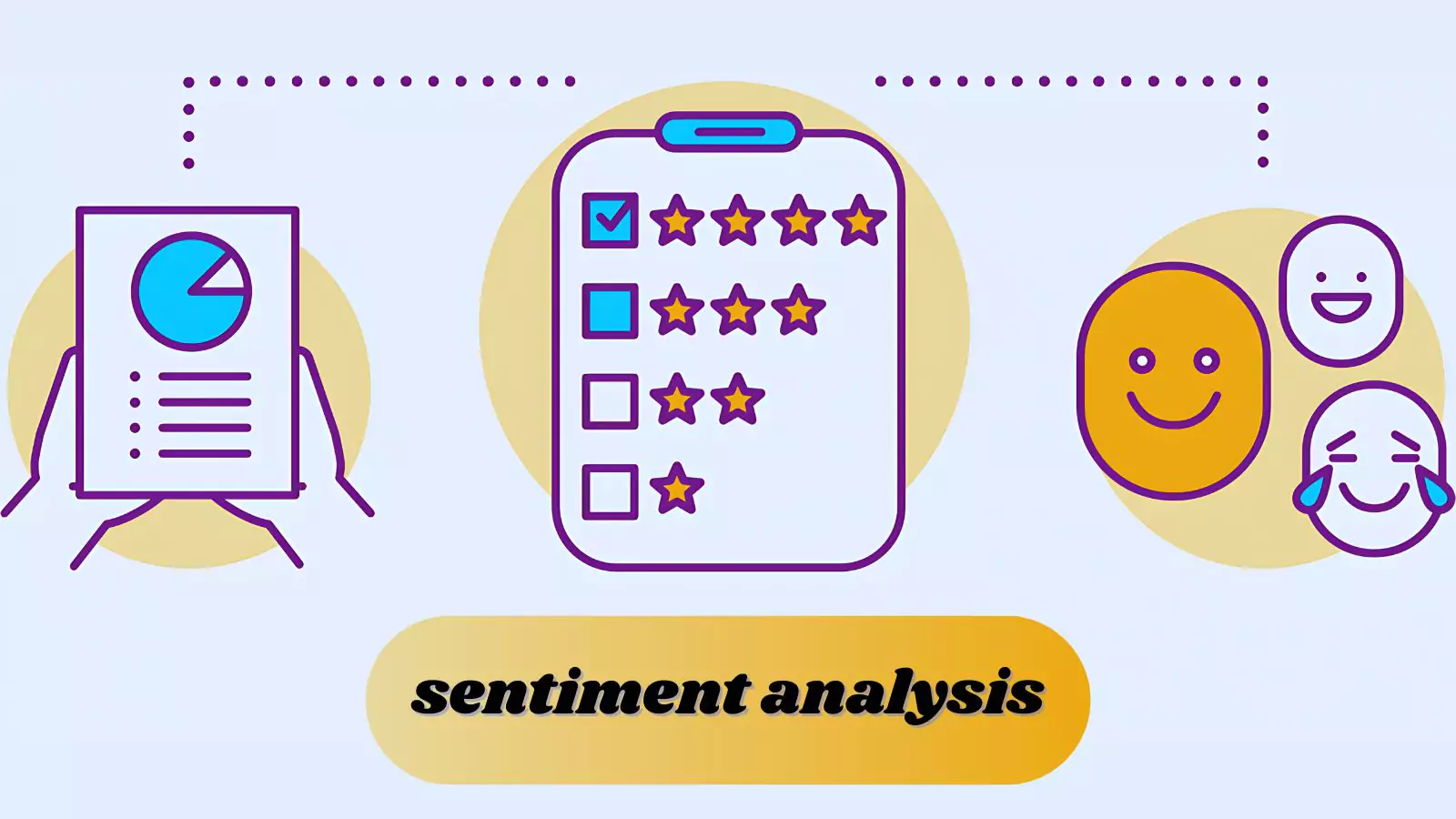In a competitive market, understanding user sentiment is no longer just advantageous- it’s imperative. Analyzing user sentiment provides deep insights into customer preferences and behaviors, enabling businesses to refine products, enhance services, and ultimately, outpace competitors.
As businesses increasingly harness the power of sentiment analysis to decipher customer feedback, they gain a strategic edge in tailoring experiences that resonate and retain loyalty.
Join us as we delve into compelling sentiment analysis examples and explore how this transformative technology shapes the future of customer-centric strategies.
In a hurry? Listen to the blog instead!
What Is Sentiment Analysis?
Sentiment analysis is an automated process that aims to discern the underlying feelings or opinions expressed in text. It’s a fascinating subfield of Natural Language Processing (NLP), a branch of Artificial Intelligence (AI) that focuses on how machines interpret and understand human language.
Sentiment analysis examines subjective information in text, such as opinions, appraisals, emotions, or attitudes toward a specific topic, person, or entity. It categorizes expressions into positive, negative, or neutral sentiments. Here are some sentiment analysis examples:
- Positive sentiment: “I like your website’s new design!”
- Neutral sentiment: “Not sure whether the new design is to my liking or not!”
- Negative sentiment: “The new design is awful!”
Why Is Sentiment Analysis Important For Businesses?
Sentiment analysis examples are crucial for businesses because they provide valuable insights into customer interactions, allowing businesses to identify their strengths and areas needing improvement. This understanding enables teams across organizations to make informed decisions and effectively enhance their products and services.
Here are three significant impacts of sentiment analysis in business:
Enhancing Customer Service:
By monitoring sentiment trends, businesses can track customer satisfaction levels and pinpoint areas needing attention. This feedback helps marketers devise strategies that foster customer loyalty and retention. Analyzing customer feedback consistently- allows businesses to address issues proactively, boosting satisfaction and trust. Utilizing social media customer services enhances this process by providing real-time insights and quicker response times.
Improving Brand Reputation:
To enhance brand reputation, monitoring public sentiment in online conversations is crucial. Effectively analyzing and learning from the previous sentiment analysis examples helps measure emotional responses.
This insight helps pinpoint strengths and areas needing improvement, guiding targeted marketing efforts and refining products or services to enhance the brand’s image. Effective reputation management attracts and retains customers, fosters loyalty, and drives business growth.
Automation can significantly improve brand reputation by streamlining various tasks. By automating processes such as post-scheduling, follower engagement, and performance tracking, businesses ensure consistent communication and timely responses. Social media automation tools like Socinator play a crucial role in this automation, enhancing audience engagement and contributing to a stronger brand reputation over time.
Providing consumer insights:
Sentiment analysis offers businesses valuable insights into their target audience’s preferences and expectations. This knowledge guides the development of products and services that align closely with consumer demands, fostering growth and profitability. Additionally, analyzing sentiment data within industry contexts allows brands to benchmark themselves against competitors, identifying opportunities to attract and retain customers effectively.
By examining the given sentiment analysis examples in this post, businesses can gain deeper customer insights, enhance their reputation, and make informed decisions based on data. By harnessing these insights, companies can preemptively address issues, optimize strategies, and foster growth. Tools such as Socinator simplify these tasks through automated social media management, improved engagement, and efficient sentiment trend monitoring.
Socinator: Social Media Automation Tool
 In the digital age, managing multiple social media accounts and keeping up with the relentless demand for fresh content can be a daunting task for individuals and businesses alike. Introducing Socinator, a social media automation tool designed to simplify and enhance- your social media management efforts.
In the digital age, managing multiple social media accounts and keeping up with the relentless demand for fresh content can be a daunting task for individuals and businesses alike. Introducing Socinator, a social media automation tool designed to simplify and enhance- your social media management efforts.
Socinator is a versatile software that supports various platforms, including Facebook, Instagram, Twitter, LinkedIn, YouTube, and more. It provides users with a suite of features aimed at automating routine tasks, optimizing engagement, and growing their social media presence efficiently and effectively.
Here are the key features of Socinator:
- Socinator offers extensive multi-platform support for leading social media networks like Facebook, Instagram, Twitter, LinkedIn, Pinterest, YouTube, Reddit, and Quora. This capability streamlines social media management by consolidating all accounts into a unified dashboard, saving users valuable time and effort.
- Socinator’s post-scheduling and multi-platform automation features ensure content is consistently published at designated times, maintaining a reliable and timely online presence.
- Additionally, Socinator automates engagement tasks such as liking, commenting, following, and messaging. This automation aids in organic follower growth, fosters meaningful interactions, and boosts overall engagement metrics effectively.
- The Events Manager feature allows effortless management of campaigns, product launches, workshops, and other important events. It helps users stay organized and focused on their core objectives.
- Socinator includes analytics and reporting features that allow you to monitor campaign performance. Users can track metrics like reach, engagement, and follower growth, gaining actionable insights to refine strategies and achieve optimal results.
Sentiment Analysis Working Explained
Here’s a simplified explanation of how to do sentiment analysis:
- Collect Data: First, we gather customer messages, such as emails or chat logs.
- Clean Data: The messages are cleaned up to remove numbers and extra punctuation, ensuring only the text content is analyzed.
- Analyze Sentiment: Special software programs analyze the words in messages to determine if the sentiment is positive, negative, or neutral.
- Give a Score: Instead of just labeling sentiments as positive or negative, sentiment analysis assigns a score to indicate the strength of the sentiment expressed.
- Use the Results: Finally, we use these analyzed results to understand what aspects customers like or dislike. This insight helps us improve products, services, or customer interactions based on their feedback.
Examples Of Sentiment Analysis
Sentiment analysis is a versatile tool applicable across various industries and teams. Here are some sentiment analysis examples:
1. Social Media Sentiment Analysis: Nike
Social media sentiment analysis is essential for understanding public perception of your brand, product, or campaign through platforms like Twitter, Facebook, and YouTube. It provides insights into customer sentiment before and after major initiatives, helping adjust strategies accordingly.
Nike supported Colin Kaepernick’s protest in 2018 despite backlash. Using sentiment analysis, they tracked public reactions and adjusted their approach. Over time, negative sentiment decreased, replaced by positive responses and increased purchase intent, showing how proactive analysis can enhance brand perception. This serves as a notable sentiment analysis example to navigate and influence public perception in the corporate world.
2. Customer Support Sentiment Analysis: A Mobile Carrier
Customer support sentiment analysis is crucial for improving customer satisfaction and retention in businesses like mobile carriers. By effectively understanding and addressing customer concerns, companies can improve their services and enhance their brand reputation.
For instance, a leading mobile carrier used speech-to-text software to transcribe interactions and analyze sentiment and product/service mentions in real-time. It allowed them to generate a sentiment score for each interaction, enabling proactive measures such as personalized apologies or tailored solutions.
This approach empowered operators to access customer history and sentiment summaries, facilitating prompt and relevant solutions. By integrating chatbots for initial queries and utilizing natural language processing tools, businesses can measure sentiment across digital platforms, ensuring seamless support experiences and anticipating customer needs effectively. This is one of the sentiment analysis examples that illustrate enhanced customer experiences.
3. Customer Feedback Analysis: TechSmith
 Analyzing customer feedback is vital for businesses like TechSmith to refine products, enhance user experience (UX), and optimize websites effectively. By understanding customer sentiment through surveys, businesses can make informed decisions that improve satisfaction and retention.
Analyzing customer feedback is vital for businesses like TechSmith to refine products, enhance user experience (UX), and optimize websites effectively. By understanding customer sentiment through surveys, businesses can make informed decisions that improve satisfaction and retention.
For instance, TechSmith used survey sentiment analysis to gather comprehensive feedback. They strategically placed surveys on key website pages, asking targeted questions to understand user frustrations and preferences. Using Google Analytics, they identified high-impact pages and analyzed interactions to find areas for improvement.
TechSmith then used spreadsheets and sentiment analysis tools to translate qualitative feedback into actionable insights. This approach allowed them to optimize UX/UI elements, refine product features, and validate improvements through A/B testing.
To implement similar strategies effectively, businesses can use sentiment analysis examples such as:
- Use behavioral analysis tools to visualize user behavior.
- Place surveys strategically throughout the customer journey to capture relevant feedback.
- Segment users for targeted questions that uncover specific insights.
- Implement various survey types to capture diverse feedback.
- Analyze data using tools like spreadsheets or sentiment analysis software to extract actionable insights.
By integrating these approaches, businesses can improve their offerings, enhance customer experiences, and build long-term loyalty.
4. Text Sentiment Analysis: WatchShop
Text sentiment analysis is essential for understanding customer feedback across various channels, enabling businesses to improve website usability, satisfaction, and conversion rates.
For example, WatchShop used sentiment tools to aggregate feedback and derive sentiment scores, which acted as KPIs for monitoring satisfaction levels. When scores fell below benchmarks, qualitative analysis pinpointed underlying issues. To implement similar strategies:
- Use Strategic Surveys: Place surveys on product pages or during checkout to gather targeted feedback.
- Employ Behavioral Analysis Tools: Use session recordings and heatmaps to identify user pain points and navigation issues.
- Conduct Customer Interviews: Transcribe interviews to gather qualitative feedback and refine offerings.
- Use Text Analysis Tools: Extract insights from feedback to address customer concerns effectively.
These methods optimize performance and enhance customer experiences, driving improvements that resonate with the audience.
Businesses can leverage sentiment analysis examples in various applications to gain profound insights, refine strategies, and foster lasting customer satisfaction and loyalty.
Read More
How To Master Social Media Customer Service
How To Improve Your Customer Sentiment Analysis For Better Business?
Best Practices For Sentiment Analysis
Customer Feedback Analysis:
As a business owner, you can use sentiment analysis on online reviews to categorize them as positive, negative, or neutral. Positive reviews might praise customer service or product quality, while negative reviews could highlight issues like shipping delays or defects. Tracking sentiment trends over time helps identify recurring problems and address customer concerns, ultimately improving customer satisfaction and loyalty.
Social Media Monitoring:
Social media platforms like Twitter, Facebook, and Instagram offer valuable insights into public sentiment. Using sentiment analysis, organizations can monitor real-time brand mentions and comments to gauge public opinion on their brand and products.
Exploring sentiment analysis examples illuminates its crucial role in effective business strategies. For example, during a product launch, sentiment analysis helps assess initial reception, identify influencers, and respond quickly to negative feedback. Engaging with the online community and addressing concerns builds trust, fosters positive relationships, and strengthens brand reputation.
Market Research and Competitive Analysis:
Sentiment analysis is crucial in market research to understand consumer preferences and competitive landscapes. Analyzing product reviews and online forums reveals emerging trends and competitor strengths and weaknesses. This information helps in adapting offerings to meet consumer needs, gaining a competitive edge, and benchmarking brand sentiment against competitors.
Political Sentiment Analysis:
During elections, sentiment analysis is vital for assessing public opinion about candidates and policy issues. Analysts track sentiment trends across social media, news sources, and forums to shape effective campaign strategies. By examining specific sentiment analysis examples- identifying shifts in voter sentiment towards certain policies or candidates- political analysts can address concerns proactively and adjust messaging to better connect with the electorate. This approach not only influences public perception but also enhances the overall effectiveness of campaign efforts.
Incorporating sentiment analysis examples illustrates its role in informing decisions, improving customer experiences, and fostering positive outcomes across diverse domains. Effectively leveraging sentiment analysis enables organizations to extract insights, mitigate risks, and sustain competitiveness in today’s data-driven landscape.
Bringing Sentiment Analysis Examples To Business
Sentiment analysis offers valuable insights into public opinion and consumer behavior, vital for informed decision-making in today’s data-driven landscape. Tools like Socinator further enhance these capabilities by automating social media interactions and boosting engagement and reach across platforms. For instance, sentiment analysis examples illustrate how businesses can use these insights to refine their strategies and better connect with their audience.
As technology progresses, sentiment analysis enhances its understanding of human emotions, enabling businesses to strategize effectively in marketing and customer relations. Utilizing sentiment analysis gives businesses- a competitive advantage by providing actionable, real-time insights based on data. This capability highlights how sentiment analysis examples display its pivotal role in shaping business strategies.
FAQs
How does sentiment analysis function?
Sentiment analysis utilizes algorithms, often in conjunction with tasks like named entity recognition (NER), natural language processing (NLP), and machine learning (ML), to swiftly and accurately assess the sentiment conveyed in data.
What’s a real-world example of sentiment analysis?
Social media monitoring is a prime example. Companies employ sentiment analysis to scrutinize tweets, comments, and posts related to their offerings. It helps them make strategic marketing decisions and enhance customer engagement based on public sentiment.
Where can sentiment analysis be applied?
Sentiment analysis finds applications in various fields:
- Customer feedback: Analyzing opinions on products or services.
- Brand monitoring: Tracking public sentiment on social media platforms.
- Market research: Understanding sentiment in market reports.
- Political analysis: Assessing public views on candidates or issues.
- Product development: Identifying areas for improvement from user feedback.
- Financial markets: Predicting trends by analyzing news sentiment.
What are the types of sentiment analysis?
Sentiment analysis algorithms can be categorized into three types:
- Rule-based systems: These algorithms automatically analyze sentiment using predefined rules and patterns.
- Automatic systems: These utilize machine learning techniques to analyze sentiment by learning from data.
- Hybrid systems: These combine both rule-based and automatic approaches for more accurate sentiment analysis.









